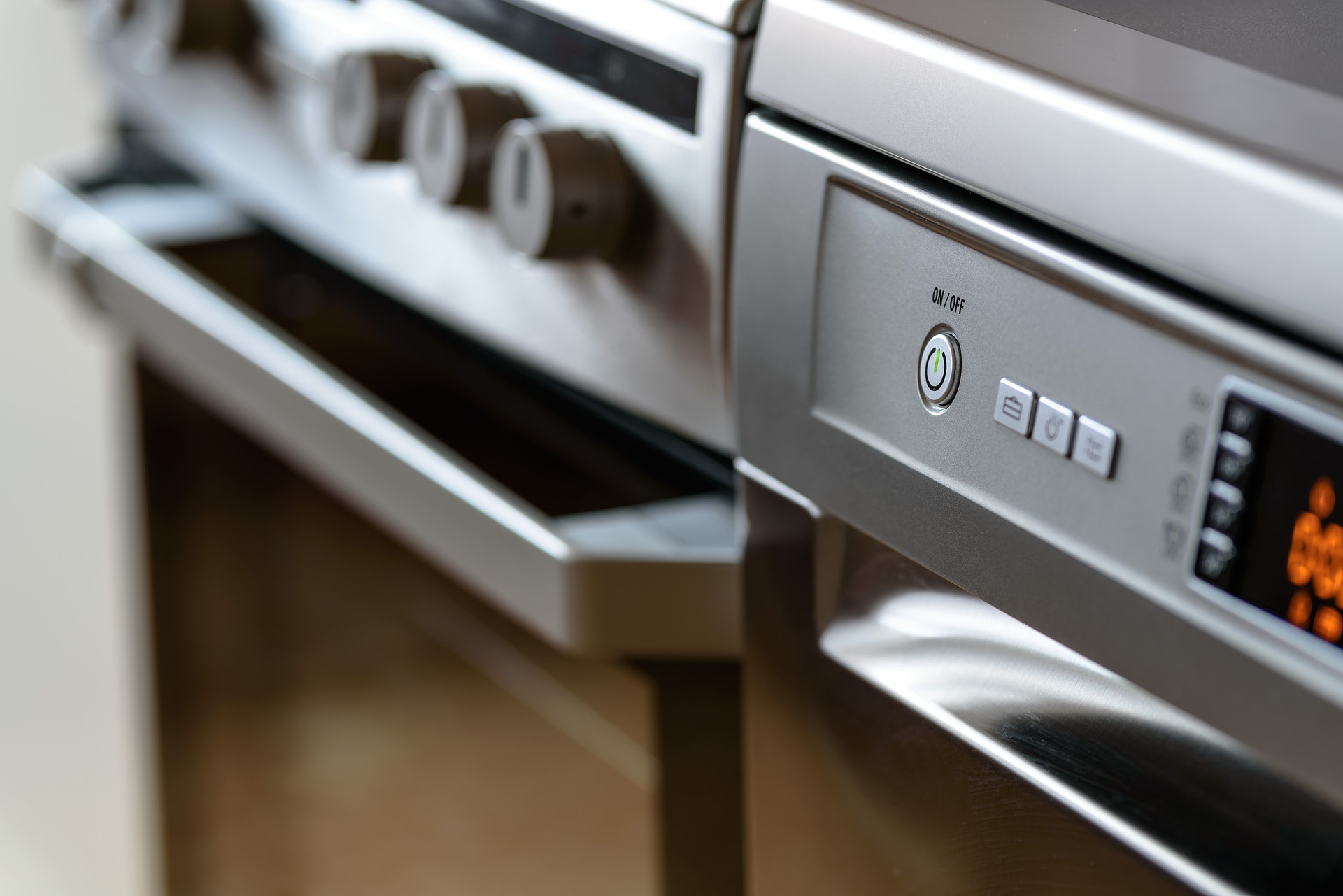When it comes to upgrading your kitchen and installing new fixtures and appliances, the first step, of course, is always going to be removing the old ones. Smaller fixtures and appliances are fairly easy to do yourself, but the larger ones, such as stoves, dishwashers, and microwaves, will need a bit of preparation and research. We suggest always consulting the specific instructions for each appliance when removing/dismantling. If you cannot find the accompanying literature, please seek the advice of a professional, just to be safe.
First, make sure you measure door openings and large appliances before you try to move them in. You can use old carpet pieces or cardboard boxes to slide them across floors and protect those floors at the same time.
Electric Range – Free Standing. This appliance can be moved away from the wall so that you can disconnect it. Once it is placed on a dolly it can be taken to a convenient spot for removal. If there is an upper oven with a fan, be sure to disconnect the duct connection beforehand.
Range – Drop In. This will be fastened to the base or side cabinets, so you will want to look inside the range itself or inside the cabinets to find the connection. Use help to lift the range up to unplug it or turn off the gas. It can then be placed on a dolly for removal.
A few points to consider for specific range styles:
- A Gas Range will have to be moved forward just far enough to reach the shut-off valve for the gas. Usually, the flexible tubing used will give a little clearance. Turn the valve until it is tightly off, and then disconnect the flexible tubing from the valve using a small wrench. You will then be able to slide the range out into the room. If you are not planning to reuse the existing gas line, you will want to disconnect the supply line as well. Once the main gas valve is off, remove the supply line and put a plug fitting over the gas pipe which is inside the stud wall. Once this is accomplished, you can ask the utility company to inspect the gas system and relight the pilot lights for any remaining gas appliances.
- Wall Ovens most likely will have the electrical or gas connection housed in the cabinet below the unit. Unplug the cord from the socket or turn off the gas valve and disconnect the flexible tubing. Then, you can unscrew the screws that connect the oven to the frame or cabinets – these are usually on the inside of the oven door. Ease the unit forward until you can lift it onto a dolly.
- Cooktops also house the power or gas connection in the cabinet below or possibly in the cabinet on either side of the unit. Pull the plug or turn off the gas valve and disconnect the flexible tubing from the valve. Unscrew the unit from the countertop and simply lift it out. If you do not plan on reusing the gas, remove the supply line and put a plug fitting over the gas pipe which is inside the stud wall.
- An Over the Range Hood Vent will house the electrical connection under the removable light or filter panel. Disconnect those wires and cap them with wire nuts as described previously. The cabinet doors above the hood will give access to the vent where it connects to the duct. You will need to look up into the hood to see where the screws are located that attach it to the upper cabinets. Remove these screws and lift the hood down and out. Keep in mind that you may need someone to hold the hood in place while you unscrew the screws to keep it from falling while you are working on this.
When it comes to upgrading your kitchen fixtures, we are here to help. Ascension General Contractors is a full-service repair company, and we are proud to serve the Nashville community.

